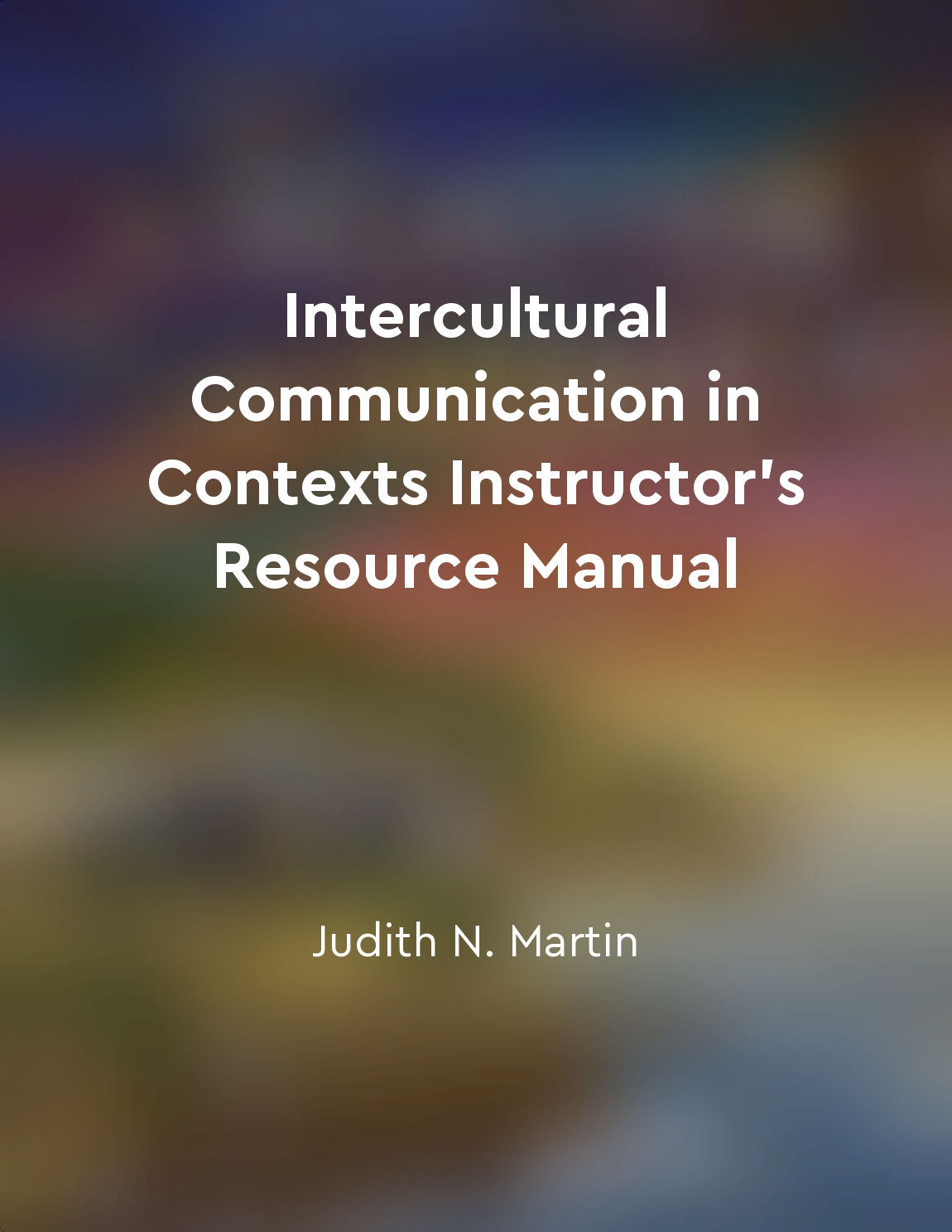Stereotypes can hinder communication from "summary" of Intercultural Communication in Contexts Instructor's Resource Manual by Judith N. Martin,Thomas K. Nakayama,Lisa Bradford,Jolanta A. Drzewiecka
Stereotypes are oversimplified beliefs about a particular group of people that can lead to misunderstandings and miscommunications in intercultural interactions. When individuals rely on stereotypes to make assumptions about others, they may fail to see the uniqueness and complexity of each person as an individual. This can hinder effective communication by preventing individuals from truly listening to and understanding one another. Stereotypes can create barriers to communication by influencing how individuals interpret and respond to messages. For example, if someone holds a stereotype that all members of a certain cultural group are aggressive, they may misinterpret a straightforward comment as confrontational. This can lead to defensiveness or hostility in response, further perpetuating negative interactions. Furthermore, stereotypes can impact the way individuals perceive themselves and others in intercultural communication. When someone is subjected to stereotypes based on their cultural background, they may feel marginalized or misunderstood. This can create a sense of distance or distrust in communication, making it difficult to establish rapport and build meaningful connections. In addition, stereotypes can limit individuals' ability to see beyond surface-level characteristics and engage in deeper, more meaningful conversations. When individuals rely on stereotypes to categorize others, they may overlook the richness of different perspectives and experiences. This can prevent genuine dialogue and mutual understanding from taking place, hindering the potential for true intercultural communication.- It is essential to recognize the impact of stereotypes on communication and strive to overcome these barriers by challenging assumptions and seeking to understand others on a personal level. By acknowledging the complexity and diversity of individuals within cultural groups, we can foster more inclusive and effective intercultural interactions.
Similar Posts
Women should advocate for themselves and others in the workplace
It is crucial for women to speak up for themselves in the workplace. By advocating for their own needs and desires, they can en...

Indigenous perspectives offer valuable insights into environmental issues
The deep connection between Indigenous peoples and the environment has long been recognized as a fundamental aspect of their cu...
Prosocial behavior is voluntary behavior intended to benefit others
Prosocial behavior is defined as voluntary actions taken with the intention of benefiting others. This type of behavior encompa...
Our reflections can inspire change
Reflections have the power to shake us awake, to rattle our cages of complacency, and to ignite the fires of change within us. ...
Clarity is essential for effective communication
Effective communication hinges on clarity. Without it, messages can be misunderstood, leading to confusion and potential confli...

Environmental racism disproportionately impacts communities of color
Environmental racism is not just a theoretical concept; it is a harsh reality that many communities of color face every day. It...

Embrace the power of perseverance in achieving success
The key to achieving success lies in embracing the power of perseverance. It is essential to understand that success is not alw...
Provide culturally responsive assessments
Culturally responsive assessments involve designing and implementing evaluation tools that are sensitive to the cultural backgr...

Centering marginalized voices is crucial
Centering marginalized voices is crucial in our society. It is essential to listen to those who have been pushed to the margins...
Listening actively fosters understanding and connection
Active listening is like a superpower. It's not just about waiting for your turn to speak, but about truly absorbing what the o...


